Flâneries in Paris: The Assemblée nationale and the Invalides
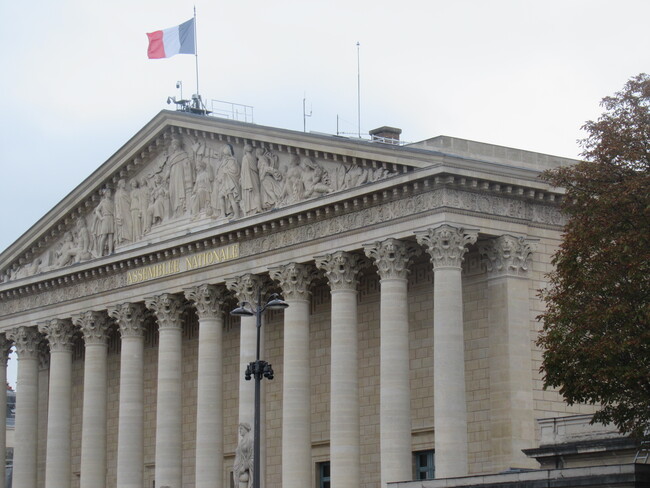

- SUBSCRIBE
- ALREADY SUBSCRIBED?
BECOME A BONJOUR PARIS MEMBER
Gain full access to our collection of over 5,000 articles and bring the City of Light into your life. Just 60 USD per year.
Find out why you should become a member here.
Sign in
Fill in your credentials below.
This is the 35th in a series of walking tours highlighting the sites and stories of diverse districts of Paris.
This flânerie began, unexpectedly, with an insider’s view of the debate taking place in the French Parliament. I like the way the décor in Paris metro stations often hints at the area above ground – sultry black and white photos of Miles Davis and Juliette Gréco at Saint-Germain-des-Prés, tiled frescos on a revolutionary theme at Bastille, and here at the Assemblée Nationale station, live film footage from the debating chamber.
The députés were discussing the Finance Bill for 2025 and as I write this up three months later, it’s only just been passed after the resignation of at least one prime minister and months of what journalists have referred to as “protracted wrangling” (Le Monde) and “months of political drama” (think.ing.com). Moreover, as Reuters puts it, “in a few months they will need to start the process all over again for the 2026 budget.” Quite the talking shop, then.
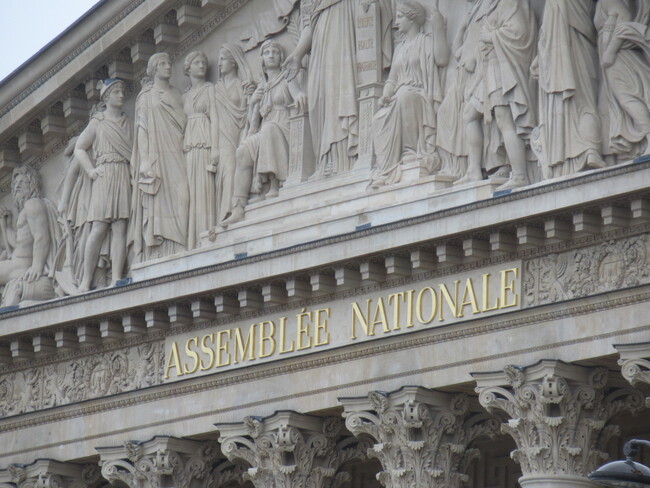
Assemblée nationale. Photo: Marian Jones
My plan was to explore the nearby Invalides area, then loop back along the river and past the Assemblée, but a quick glance at the map suggested an enticing detour. A couple of streets east of my planned route stood the Sainte Clotilde church, named after the wife of Clovis, king of the Franks, whose devout faith converted her husband at the turn of the 6th century and brought Christianity to the country we now call France. I imagined an ancient building, maybe one of the city’s first churches, small and dark, as modest as its namesake who is usually depicted praying or dispensing charity.
Mais non! The soaring twin towers of the Basilique Mineure de Sainte-Clotilde are a gothic splendor, built in the mid-19th century during the same neogothic revival which inspired Viollet-le-Duc’s renovation of Notre Dame. Seeing pictures of the newly reopened cathedral has been a reminder of this stunning style, with its high pointed arches, its light-filled interiors and magnificent stained-glass windows. A little research told me I should have been expecting something special, for basilique mineure status is granted by the pope himself, and among the five such churches in Paris are Sacré-Coeur and Notre Dame. Pope Leon III honored Sainte Clotilde in 1898, to mark the 1400th anniversary of the baptism of Clovis. Amazing!
Inside, there was much to ponder. Each side is lined by bas-reliefs, 14 in all, depicting the Stations of the Cross, moving images sculpted into cream stone and telling the story of Jesus from his trial to his crucifixion. More sculptures honor prominent Catholics, such as Thomas More, beheaded for his refusal to accept Henry VIII’s founding of the Church of England and Pope John Paul II. And, small but exquisite, a polychrome statue of Clotilde. Her pale blue cloak and reflective, downward gaze convey her modesty, her golden crown reflects her royal status. The plain walls served to accentuate the color all around, just as they did in the medieval churches with their painted statues and radiant, stained-glass windows.
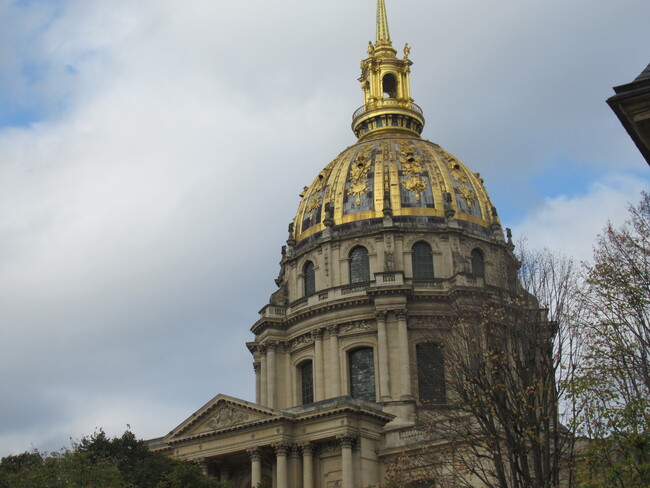
Invalides Dome. Photo: Marian Jones
After this delightful detour, I wove my way to the Boulevard des Invalides where a distant view of the Eiffel Tower rose up behind the little Parc d’Ajaccio. A toddler chasing pigeons paused to wave at me through the fence as I passed, behind him two tiny tots were taking on grandma at football. Along the boulevard which runs down one side of the Invalides were information boards introducing this grand institution. I was starting at the “wrong” end, so reading the history backwards, as if I were peeling back layers through time. First then, came the summary. The Invalides, it said, is many things, including “institution, dome, cathedral, court of honor, museum, monument.”
A youngish Charles de Gaulle stared out at me from one board, alongside a text explaining that as president he’d awarded the Invalides the Ordre de la Libération and that now there’s a multi-media exhibition about him inside. Further back in time, came Napoleon, who had made the Invalides a pantheon for military heroes and whose final resting place is here. Napoleon had requested in his will to be buried “on the banks of the Seine,” and a decade after his death King Louis-Philippe had his ashes transferred here from St Helena where he’d died in exile.
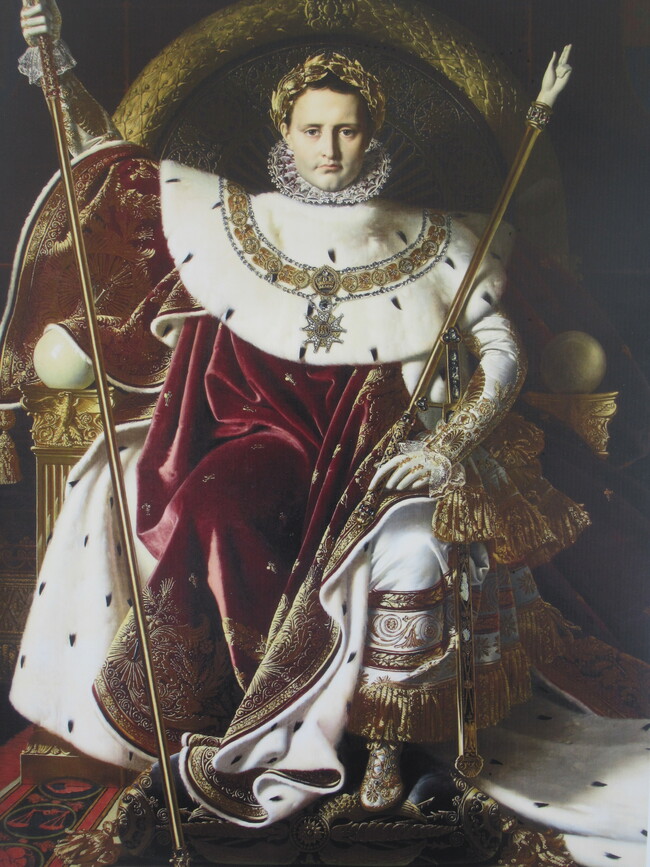
Image of Napoleon outside Invalides. Photo: Marian Jones
Earlier still came the founding of the institution by Louis XIV. Grateful to the soldiers who made his army the greatest military force in Europe, he created this hospital so that the invalides among them, the injured or the elderly, would be looked after. Posters showed paintings of Louis signing the order and of the first soldiers arriving in 1674. I read that Louis – better known for his extravagance and authoritarianism – said this act was “la plus grande pensée de ma règne” (“the greatest decision of my reign”). Today, over three centuries later, it still fulfills this function and I spotted some of today’s residents out for a stroll and others resting on a sunny terrace.
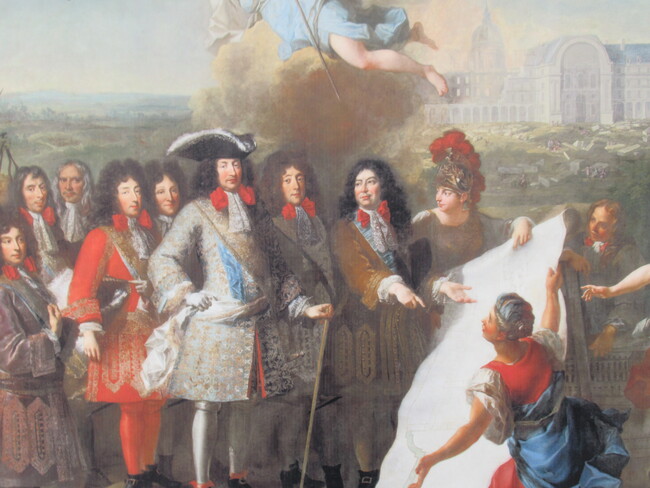
Image of Louis XIV signing the declaration about Invalides. Photo: Marian Jones
The dome, at over 300 feet, was the tallest building in Paris for two centuries, until it was topped by the Eiffel Tower, and it’s still magnificent, especially on a day as bright as this one when its gold leaf truly sparkles. The coaches lined up along Avenue de Tourville opposite the back entrance indicated its popularity, although when I walked past there was no queue at this entrance. The security man smiled that yes, to go in and see Napoleon’s tomb would be free, just a quick bag check needed. I’d been before, so walked on, but if you haven’t seen the great man’s ostentatious last resting place, this would make another fascinating detour.
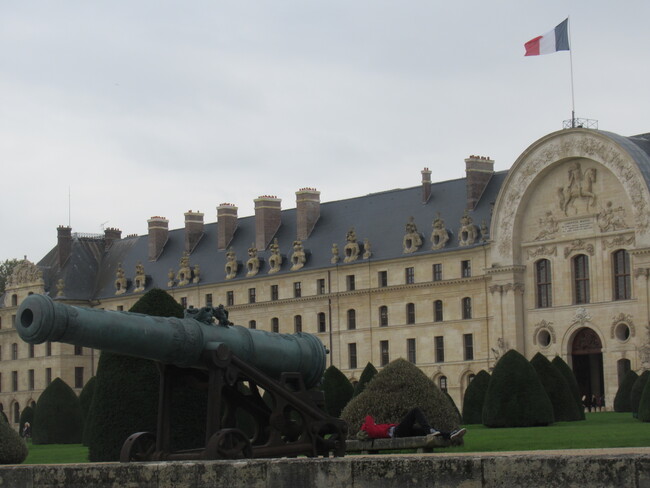
Invalides canon. Photo: Marian Jones
Rounding the corner into the Boulevard de la Tour Maubourg, the grandeur of the whole site became apparent. From the front of the Musée de l’Armée, with its imposing row of canons, the military precision of the Esplanade des Invalides opens out: perfect lawns, bisected by wide straight roads, on and on, right down to the Quai d’Orsay and the river. I passed ancient trees and grandiose balconied buildings like the Hotel de l’Empereur, named, I presume, after you-know-who. And at the end, turning right onto the riverbank, came one of the loveliest views in all Paris: the art nouveau splendour of the Alexandre III Bridge with the dome of the Grand Palais on the opposite bank as a backdrop.
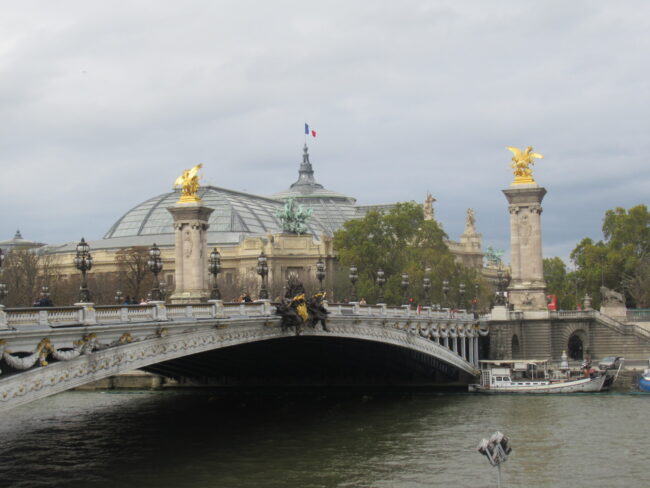
Pont Alexandre III and the Grand Palais. Photo: Marian Jones
A little way along, just as the Assemblée Nationale came into view, I saw plaques on the wall opposite in memory of people killed defending this little corner of Paris on Liberation Day, August 25th, 1945. Three, all in a row, remember Michel Varin de la Brunière, an 18 year-old volunteer; Claude Billand, an FFI resistance fighter who’d left his home village in the Loire to come and defend the capital; and Felix Burlot, a farmer whose wartime role was described as a gardien de la paix cycliste, so charged with patroling wartime Paris by bicycle in a peace-keeping role. He was shot dead by a German soldier here on the Quai d’Orsay and posthumously awarded the Légion d’Honneur.

Memorial plaque, Claude Billand. Photo: Marian Jones
Tricolore and EU flags flutter above the 12-pillared colonnade of the Assemblée nationale and statues of great figures from the past sit grandly along its length. Unlike the everyday heroes remembered in the plaques I’d seen, the words and deed of these men are widely recalled. They were politically astute and achieved great things for France, but whether they were admirable human beings is less certain. I thought of the Duke de Sully, right-hand man to Henri IV, who thought everyone capable of betraying a friend when self-interest prevailed and Jean-Baptiste Colbert, first minister of state under Louis XIV, famous for saying that “the art of taxation consists in so plucking the goose as to obtain the largest [number] of feathers with the least possible amount of hissing.”
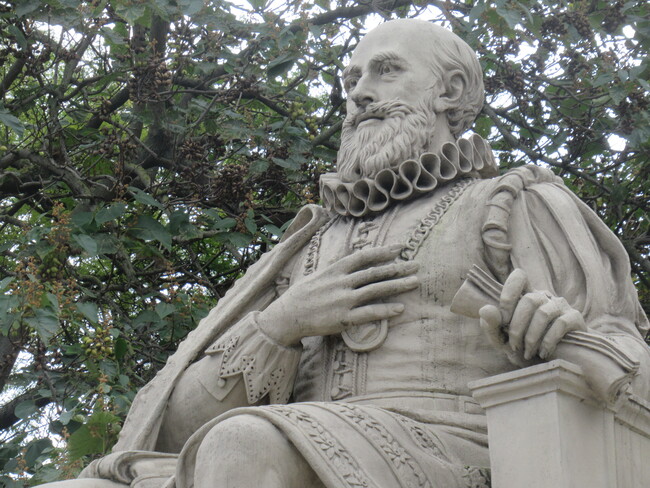
Statue of Sully. Photo : Marian Jones
I wondered whether, behind that imposing façade, the debate was continuing in equally cynical fashion. I got my answer when, ducking back down below ground at the metro station around the corner, the TV screen told me that today’s session was finished, or maybe paused for lunch, and they were playing a video history of the French parliament instead. Government of the people by the people for the people and so on. All in all, I thought, this is a fascinating little corner of Paris.

Statue of Colbert. Photo: Marian Jones
Lead photo credit : Assemblée nationale. photo: Marian Jones
More in Assemblée nationale, Flâneries in Paris, invalides, Louis XIV, Napoleon
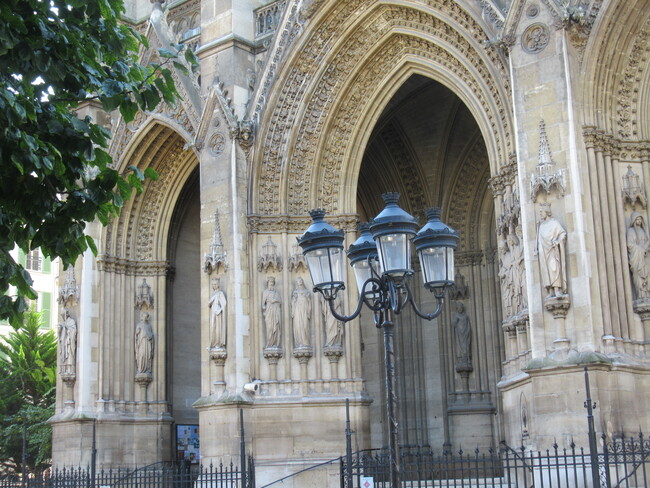
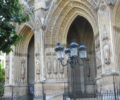
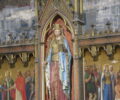
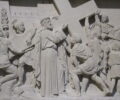
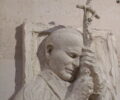



REPLY
REPLY